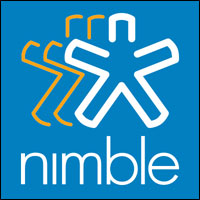
Healthgrades, an online resource to provide consumers with information about physicians and hospitals, on Wednesday launched CareChats, a tool that allows encrypted text and email conversations between patients and their healthcare providers.
Developed in partnership withConversa, CareChats enables doctors and hospitals to communicate with patients outside of visits. Among its uses are management of chronic conditions, communications before and after surgery, and lifestyle health coaching.
CareChats alerts providers when intervention is required, according to the companies, and encourages patients to either book an appointment online or contact doctors directly.
“Conversa’s innovative, scalable and reliable technology delivers an innovative and meaningful way for physicians, care teams and patients to communicate outside of office visits,” said Chris Edwards, chief marketing and experience officer at Conversa.
This approach leads “to more meaningful conversations and exchanges of information and overall better care,” he told CRM Buyer.
The CareChats tool integrates with the Healthgrades CRM platform, which is used to help doctors and hospitals better manage and communicate with existing and prospective patients.
Use Cases
Several major healthcare systems have used CareChats to help doctors and other hospital staff manage patients with chronic illnesses and for other purposes.
Ochsner Health System, for example, instituted a pilot program in which primary care doctors prescribed the CareChats tool for patients with uncontrolled hypertension. The doctors were able to have real-time conversations with patients using personal medical data to drill down for the best treatment options.
Penrose-St. Francis Health Services used CareChats as a tool for digital health coaches in a pilot program last year.
Citrus Valley Health Partners used CareChats in a program to meet requirements set by the Centers for Medicare and Medicaid Services’ bundled payment program for total hip and knee replacements.
Growing Market
The CareChats tool reflects a trend toward automating doctor-patient communications to fill the gap between office appointments, medical procedures and testing, which is important particularly in managing chronic illness, observed Victor Camlek, a telehealth analyst at Frost & Sullivan.
“In the predigital world, communications that were very important were not always very successful,” he told CRM Buyer.
A doctor might not be able to reach a patient after a surgical procedure to convey valuable information, for example.
The biggest obstacle to growing the doctor-patient communications market isn’t developing the technology — it’s getting the insurance industry on board, Camlek said. “There are a lot of hurdles that need to be crossed before this is a totally accepted market.”






















































